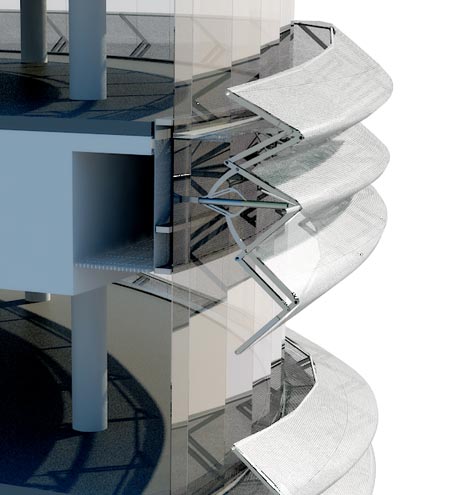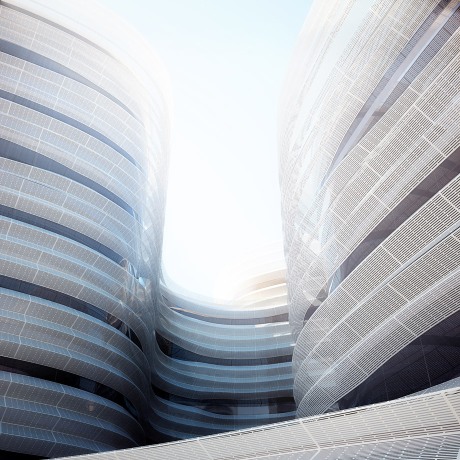
Developing the kinetic facade on the CJ R&D Center presented some unique technical challenges in terms of visualizing a range of motion for a mechanical assembly of parts. As architectural designers, we’re accustomed to working with static elements. CJ called for new methodologies that would enable us to easily manipulate hierarchical structures of linked components, allowing us to visualize how a modification to one part would effect the whole system. To do this, we used a combination of tools (inverse kinematics, wire parameters and animation constraints) originally intended for use in character animation within 3ds Max . Read the rest of this entry »
Archives for posts with tag: building facade
 As part of a recent design effort here in the studio we attempted to develop a kinetic facade that could respond and adapt in real-time to both solar radiation and user input. The client, CJ Corporation of Korea, was enthusiastic about the idea as part of their “only one” initiative which promotes unique one-of-a-kind thinking. While this certainly isn’t the only kinetic facade in the world, it presented our team with a new set of challenges.
As part of a recent design effort here in the studio we attempted to develop a kinetic facade that could respond and adapt in real-time to both solar radiation and user input. The client, CJ Corporation of Korea, was enthusiastic about the idea as part of their “only one” initiative which promotes unique one-of-a-kind thinking. While this certainly isn’t the only kinetic facade in the world, it presented our team with a new set of challenges.
[vimeo http://vimeo.com/19900510 w=460&h=259] Read the rest of this entry »


